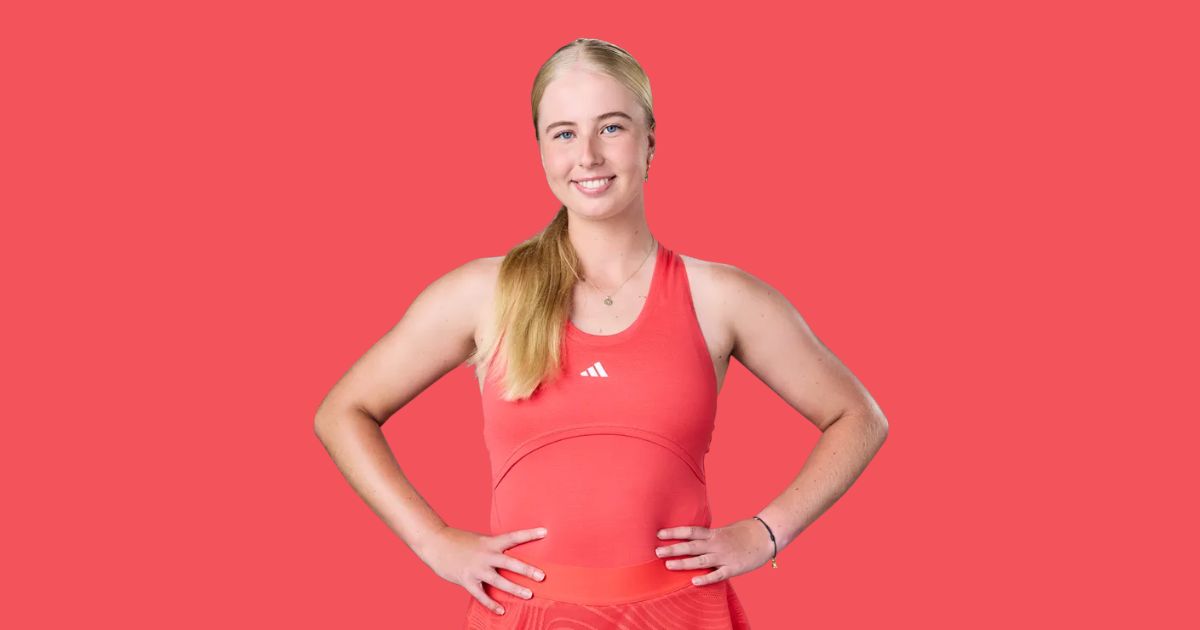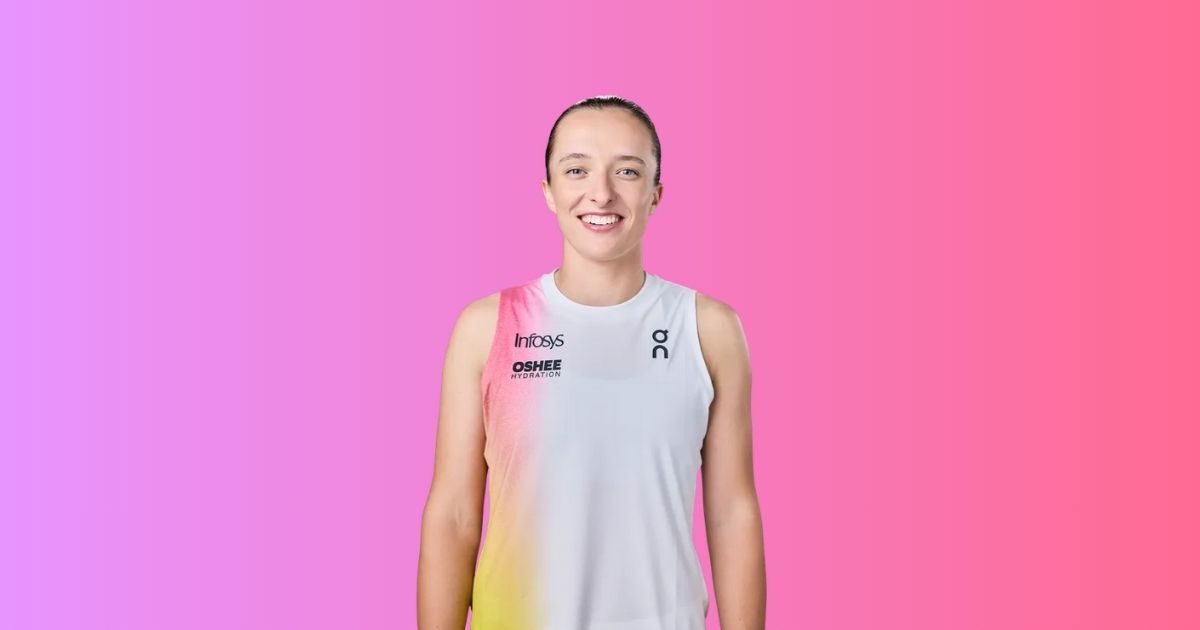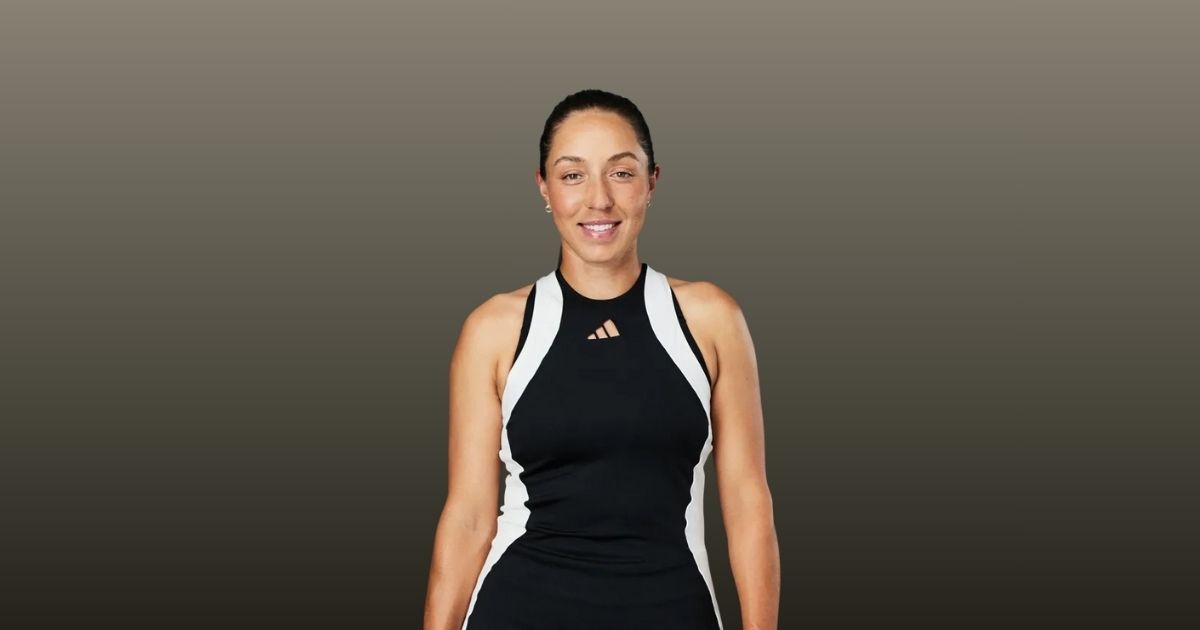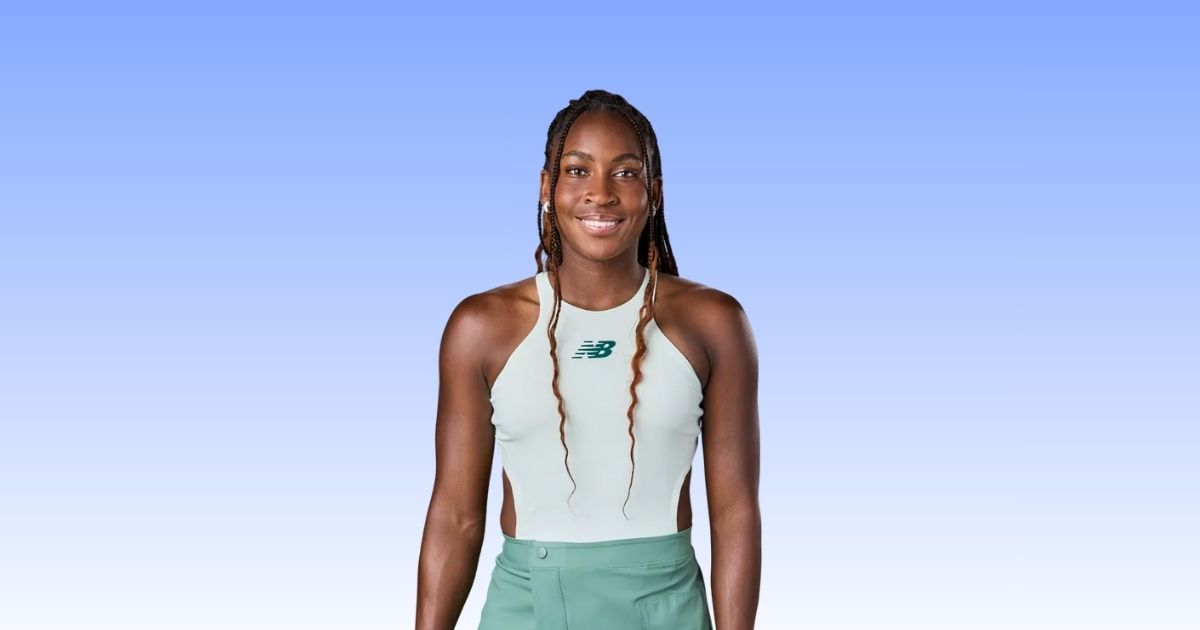Table of Contents
The Journey of Clara Tauson
There has been a big increase in searches for Clara Tauson biography as tennis fans look for a clear, well-organized picture of one of Denmark’s best players. Tauson was born in 2002 and made a name for herself early on by winning world junior titles. She then won WTA titles before she turned 20. Her game is a mix of clean power, balanced court coverage, and a gutsy attitude when things get tough.
This blog tells you her story from the beginning, including her family history in Copenhagen, her junior highlights, and the stages that led to her ascension in the business world. The layout is easy to read, with bullet points that enable you to quickly see important information, signature wins, and the things that make her style unique.
We’ll also talk about her interests outside of basketball and how she feels about competition, getting better after losing, and growing through hard times. This Clara Tauson biography has all you need to know about her and how she plays. It’s great for fans who want to learn more about her or new viewers who want to know who she is and how she plays.
Early Life and Background
- Full name: Clara Tauson
- Birth: December 21, 2002, in Copenhagen, Denmark
- Nationality: Danish
- Plays: Right-handed
Family and early exposure
- His family in Denmark is into sports.
- Learned tennis at a young age on indoor courts that are typical in Scandinavia.
- When she became older, her early teachers taught her how to deal with faster balls by focusing on clean technique, timing, and balance.
Junior base
- Rose made a name for herself on the ITF junior circuit after competing in Tennis Europe competitions.
Main junior highlight:
- Girls’ Singles championship at the Australian Open (2019).
- After getting good results on both hard courts and clay courts, he became the junior world No. 1.
- Built a game that starts at the baseline and has a straightforward, repeating swing path.
Early strengths that stayed strong
- Takeback on both wings is small and dependable.
- Getting ready early helps her steal time from her opponents.
- Calmly choose your shots when the scoreboard is on.
Support system
- The Danish tennis federation helped set up travel, training weeks, and fitness blocks.
- She got a sense of pace and physical requirements when she was a teenager from watching professional practice sessions.
Career Summary and Playing Style
A quick look at the career overview
- She became a professional in her mid-teens and started in ITF 15K and 25K events before moving up to higher-level competitions.
- She won her first WTA title as a teen and then won another one soon after.
- She became one of the top 100 players in the world while still a teenager, due to her exceptional performances on hard courts.
- Like many growing players, they had times when their momentum stopped and started because of injuries or fitness issues. They rebuilt their ranking by focusing on crucial events.
The main way of playing
- Offensive baseliner with strong, flat power.
What it needs to grow:
- Taking the ball off both wings early.
- Direct striking patterns that make straight-line winners.
- Using serve-plus-one to take charge of the middle of the court.
- The ball stays accurate, and time is rewarded on hard courts and indoors, where it is comfortable.
Notes on the technical side
Forehand:
- A linear swing path with a low-to-high drive for a ball that goes through.
- Her crisp timing on both wings is reminiscent of Belinda Bencic, who is also known for early ball striking and compact mechanics.
- Likes to use an inside-in forehand from the ad court to catch right-handed players off guard.
Backhand:
- A little two-handed racket that works well for cross-court rallies.
- Confident redirect down the line, a critical pattern in quicker courts.
Serve:
- A solid first serve speed with a simple motion that works in all matches.
- Uses the body serve on the deuce side to block returners and set up forehand dominance.
Return:
- Early contact point; steps inside the baseline against second serves.
- Punchy, blocked returns on speedier first serves to create rallies that are even or better.
Tactical identity
- Instead of looping heavy topspin, it builds points with depth and takes time off.
- Likes baseline geometry better than extended net play, but will close when a short ball offers up room.
- Gets quick points with the serve and the initial strike, which saves energy over longer weeks.
Focus on fitness and training.
Focus on:
- Strength in the lower body for the quick first step.
- Core stability keeps the swing tight while you’re under strain.
- Her commitment to physical durability aligns with the standards set by players like Paula Badosa, who built her game around strength, balance, and mental endurance.
- Repeatable footwork patterns to set early and hit through the court.
Major Career Milestones
Early career takeoffs
- The first time they played in the WTA main draw was after they had consistent results at the ITF level.
Much like Daria Kasatkina, Tauson showed maturity early in her transition from ITF success to competing confidently at the WTA level
Notable handoff from junior to pro:
- The 2019 Australian Open Girls’ Singles champion made a name for herself among scouts and analysts.
WTA championships
- She won her first WTA singles title as a teenager, which showed how high she could go.
- Soon after, they won a second title, proving that the initial success wasn’t a fluke.
- Both runs included straight-set victories over higher-ranked players, thanks to good early ball striking and calm serve games at the close of sets.
Progress in the Grand Slam
- Made it beyond the qualifying rounds at majors and won matches in the main draw on hard courts.
- Showed that they could beat seeded opponents when the time was right, especially in quick indoor or low-bounce circumstances.
Ranking highlights
- She made it into the top 100 when she was in her late teens.
- Pushed closer to the top 50 during healthy stretches, thanks to WTA title points and deep runs at mid-tier events.
Representation on a national level
- Chosen to be on the Billie Jean King Cup teams representing Denmark.
- Gave singles points by playing aggressively from the baseline against a range of styles.
Bouncing back from setbacks
- Handled injuries and bad form by taking planned breaks: lower-tier events to get back into the swing of things, then back into WTA draws.
- Used indoor hard events to speed up the process of getting points back after taking time off.
Break-Through Moments
Teenage WTA title run:
- Known for striking cleanly against experienced players.
- Confidence under pressure: kept serving while ahead late in the game and used first-strike patterns to protect break advantages.
Second WTA title:
- Confirmed durability throughout a week: quarterfinals, semifinals, and final without a big drop in level.
Grand Slam breakthrough(s):
- Getting into the main draw by winning authoritative matches and then winning at least one main-draw match to show that you’re ready for bigger stages.
Early rhythm:
- Opens matches quickly and sends a message with aggressive responses.
Tiebreak poise:
- Patterns are easy: hit a solid first serve to the body, a forehand into open court, and a backhand redirect when you need to.
Strength indoors:
- Quick indoor courts have lower error rates and flatter ball flight.
Confidence signs
- Taking the ball early at 30–30 or 4–4 points.
- Trust the down-the-line backhand to turn defence into offence.
- Quick reset after errors—no panic, returning to patterns that work.
Personal Life & Interests
Life outside of the court
- Located in Denmark, with training blocks that may include travels to indoor centers throughout Europe.
- Scandinavian athletes who are on tour are used to being around people who speak many languages.
Things you like and do
Health and getting better:
- Structured gym sessions that focus on strength in the back and mobility.
- Physiotherapy, stretching, and sleep regimens are all good ways to guard against overuse.
Getting ready for the match:
- Simple notes for film reviews and scouting: serve patterns to aim for, the opponent’s backhand height preferences, and goals for the depth of the return.
Things I like to do:
- Time with family and friends in between events.
- Music and quiet activities help keep your energy up on long trips.
People to look up to and get ideas from
- As a kid, I watched aggressive baseliners who took time off.
- Adopts aspects including early contact and no-fuss court posture from players recognized for clarity in patterns.
Community and being there
- During tournament weeks, they are active on social media with fans.
- Shares short training clips and vacation videos from behind the scenes that demonstrate what life is like on tour.
Playing Philosophy & Mentality
Make it easy:
- One to two patterns per match are the most important when making decisions.
- Use serve-plus-one to control the first four shots.
Time pressure over pure power:
- Take the ball early to make it harder for your opponent to react.
Aggression that was measured:
- When you hit a green-light ball, it goes flat through the court. When you hit a neutral ball, it stays deep and safe.
How you think
Short memory:
- Get over mistakes quickly and get back on track with routines.
Focus on the scoreboard:
- At 30-all and deuce, raise the rate of first serves.
- When the score is 0–30 or 15–30 in a return game, go after the second serve to get a chance to break.
Being strong during the seasons:
- When you come back after being laid off, you should start with defined mini-goals like holding serve patterns, returning depth, and timing your feet.
Match-day procedures
Warm-up:
- Dynamic movement, shadow swings that match the tempo.
Between points:
- Regular breathing and a visual indication (strings, logo) to reset.
Changes made on the court:
- If you’re in a hurry, add a little more net clearance until your feet catch up.
- If you’re late on returns, take a half-step back and then move forward again when the time is right.
How she wins on different kinds of surfaces
Hard courts:
- Bread-and-butter surface; hitting the ball early pays off.
Clay:
- Uses depth and backhand down the line to keep opponents from staying in the backhand corner.
- Drops back on the return only when facing servers with strong kicks, then steps in when they do.
Grass:
- Short points benefit her serve and initial strike; her backhand redirect stays low and skids.
What opponents have to deal with
- She didn’t have much time to set grips because she made contact early.
- Depth that holds them down and makes room for line modifications.
- Pressure on second serve games because of her aggressive return posture.
Career Stats and Notable Results (some of the best)
- In 2019, she won the Australian Open Girls’ Singles title and was ranked junior world No. 1.
- Two WTA singles titles as a teen, showing that she could stay consistent for a week.
- Top-100 entry before age 20, with peaks around the top-50 level during healthy streaks.
- At WTA and Slam events, quality beats seeded or higher-ranked competitors.
What Makes Clara Tauson Different
- Early contact and mechanics that stay clean even when there is a lot of pressure.
- Minimalist strategies: instead of altering patterns every game, do what works.
- Simple routines and faith in first-strike tennis help keep calm when the score is close.
- Ability to get back on track after a break by scheduling tournaments that help them develop sharper.
FAQ’s About Clara Tauson Biography
Who is Clara Tauson?
Clara Tauson is a Danish professional tennis player known for her early success on the junior circuit and her powerful baseline game. She won the 2019 Australian Open Girls’ Singles title and has captured multiple WTA titles before turning 20.
When and where was Clara Tauson born?
She was born on December 21, 2002, in Copenhagen, Denmark.
What is Clara Tauson’s playing style?
Tauson plays as an offensive baseliner, relying on early timing, flat groundstrokes, and precise ball control. She uses her serve-plus-one patterns to dominate rallies and prefers faster hard-court and indoor conditions.
How many WTA titles has Clara Tauson won?
As of 2025, Clara Tauson has won two WTA singles titles, both achieved before the age of 20.
What is Clara Tauson’s net worth?
As of 2025, her estimated net worth is around US $2 million, earned through prize money, sponsorships, and endorsements.
What is Clara Tauson’s current ranking?
Her ranking has fluctuated due to injuries, but she has been ranked inside the WTA Top 20 during her best seasons.
What are Clara Tauson’s career highlights?
Key highlights include winning the 2019 Australian Open Girls’ Singles, reaching the WTA Top 100 before 20, and defeating higher-ranked opponents in main-draw Grand Slam matches.
What surfaces does Clara Tauson perform best on?
Tauson is most effective on hard courts and indoor surfaces, where her flat, clean ball striking produces quick winners.
What is Clara Tauson’s mentality on court?
She focuses on short memory after mistakes, measured aggression, and simplified routines, sticking to one or two main patterns per match.
Who are Clara Tauson parents?
Clara Tauson was born into a sports-oriented family in Copenhagen, Denmark. Her parents are Soren Tauson and Christina Tauson.
Has Clara Tauson represented Denmark internationally?
Yes. She has competed for Denmark in Billie Jean King Cup events, contributing singles wins with her attacking baseline game.
What makes Clara Tauson different from other players?
Her ability to strike early, maintain clean technique under pressure, and rely on simple, repeatable tactical patterns makes her stand out on the WTA Tour.
Short summary of Clara Tauson Biography.
Clara Tauson is a Danish tennis player who made an early mark on the junior circuit by becoming the first Danish female to top the junior world rankings and winning the 2019 Australian Open Girls’ singles title.
Turning professional in 2019, she quickly added WTA titles to her résumé, showcasing a strong, aggressive baseline game. Despite facing injury setbacks in the subsequent years, Tauson steadily worked her way back, posting noteworthy performances and climbing the rankings into the top tier of the sport.
Off the court, the article highlights her Danish upbringing, early introduction to tennis, and supportive family background that helped shape her path into the professional ranks.
Follow her on Instagram.

Saurabh is a passionate tennis content writer and lifelong fan of the game. Whether it’s Grand Slam showdowns or under-the-radar rising stars, Saurabh brings the court to life with sharp analysis, breaking news, and deep-dive features. When they aren’t covering matches, you can find them practicing their topspin forehand or debating who is the GOAT over coffee. Do you enjoy tennis? Then you are in the right place.




